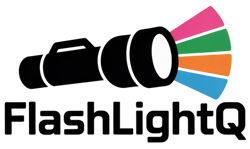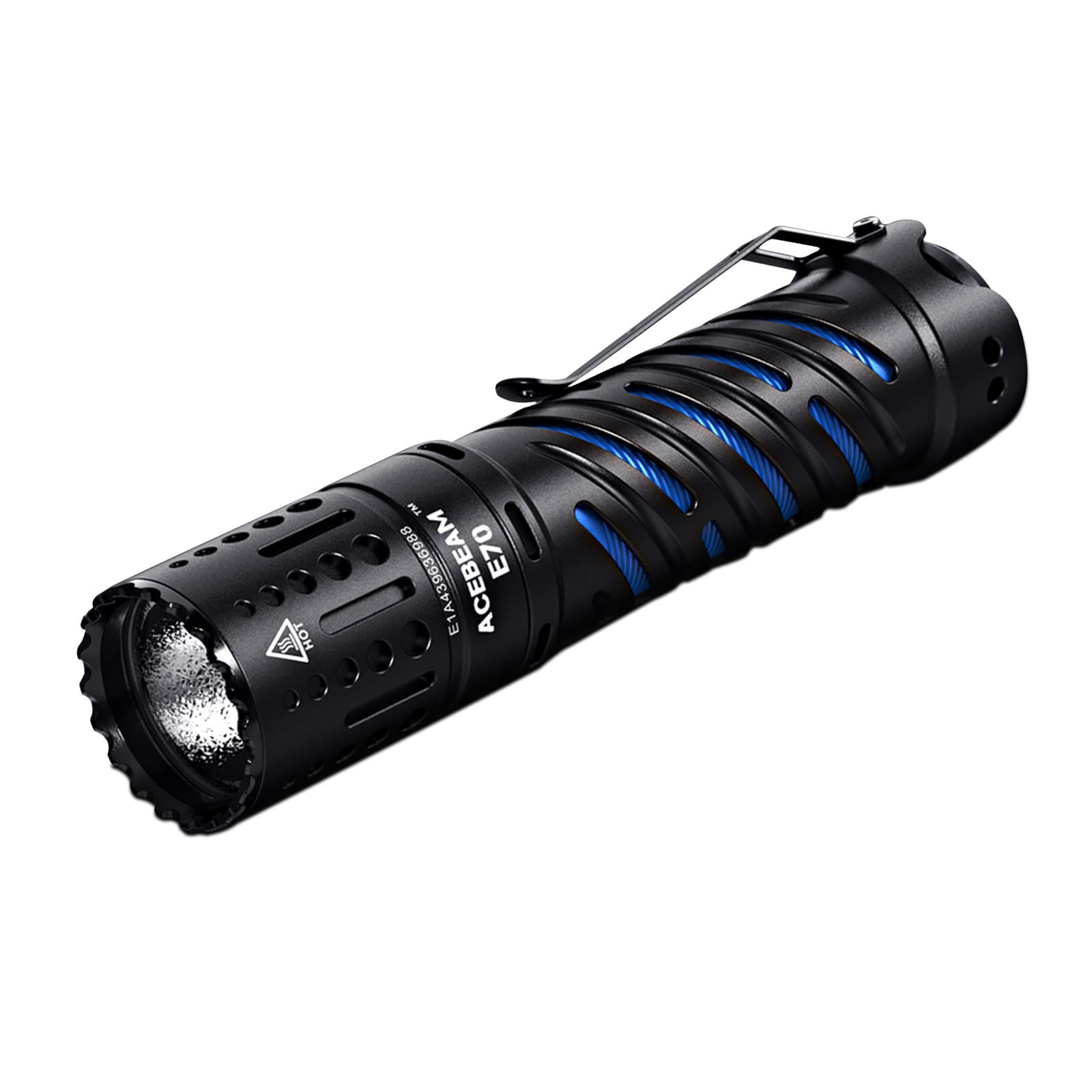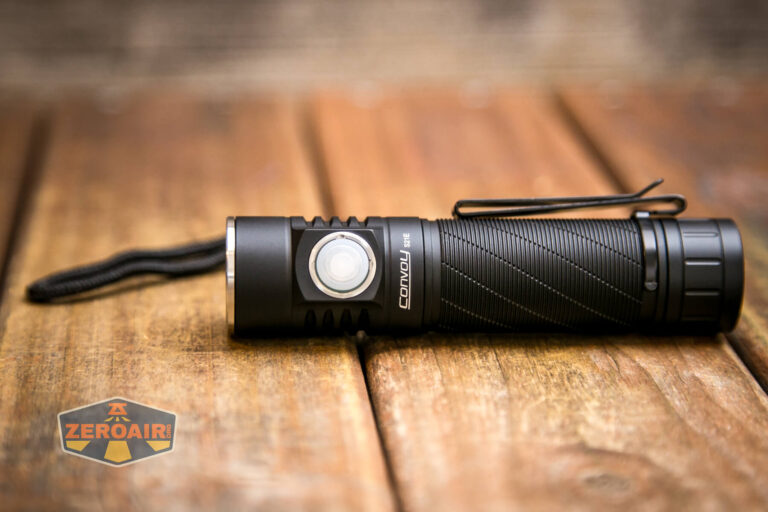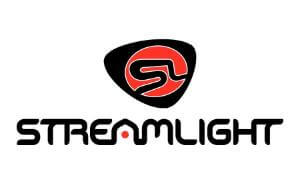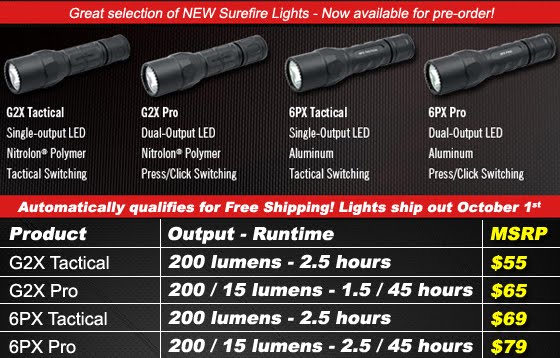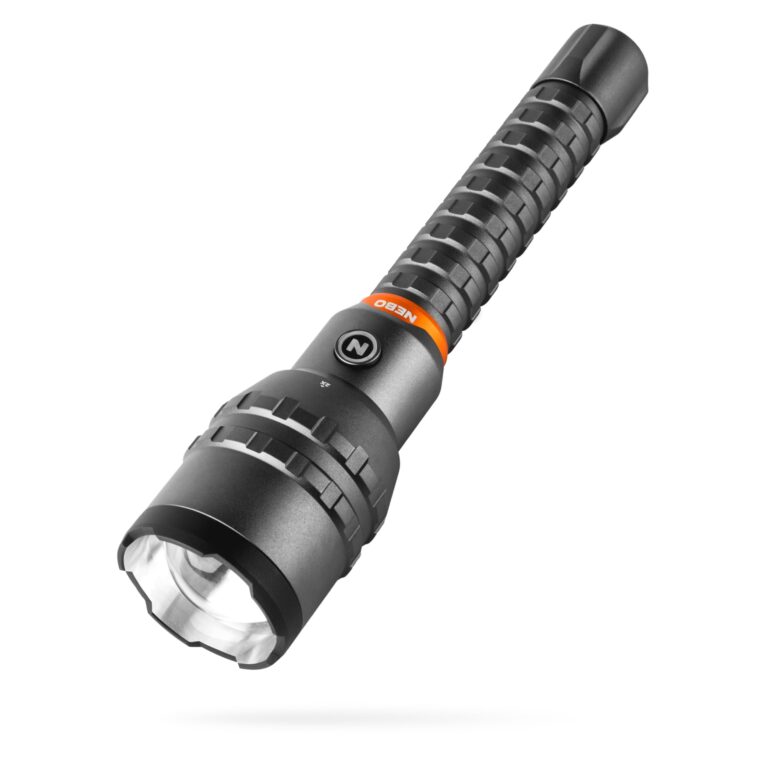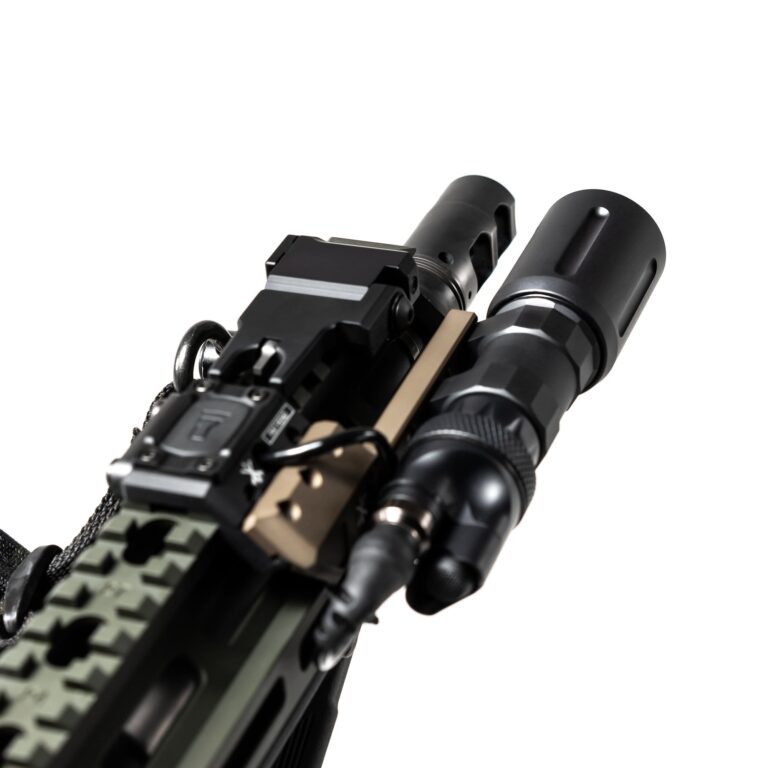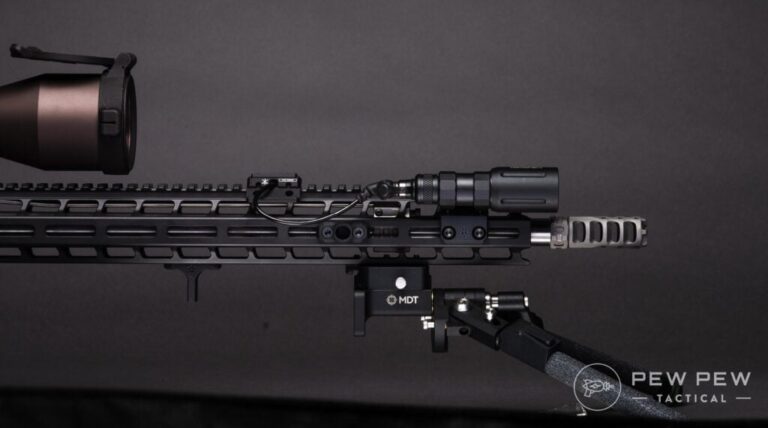Acebeam E70 Review: A Powerful EDC Flashlight Unveiled
The Acebeam E70 is a remarkable flashlight that has captured the attention of both casual users and flashlight enthusiasts alike. With its powerful output, stylish design, and innovative features, the E70 stands out in the crowded market of everyday carry (EDC) lights.
This review will delve into the various aspects of the Acebeam E70, including its build quality, user interface, performance metrics, and LED options. We’ll explore both the aluminum and high-CRI versions, examining how they fit different user needs, and provide insights into battery performance and runtime.
By the end of this article, readers will have a comprehensive understanding of the Acebeam E70’s capabilities and whether it suits their flashlight requirements.
Table of Contents
- Design and Build Quality
- LED Options and Performance
- User Interface and Operation
- Battery and Charging Features
- Performance Metrics
- Real-World Usage Scenarios
- Comparisons with Competitors
- Summary of Pros and Cons
- FAQ Section
- Conclusion
Design and Build Quality
The design and build quality of the Acebeam E70 is one of its strongest selling points. Constructed from high-strength and oxidation-resistant aerospace-grade aluminum, the E70 features a premium HAIII hard-anodized finish that ensures durability and a sleek appearance.
Material Options (Aluminum, Stainless Steel, etc.)
The E70 is available in several material options, including aluminum, stainless steel, copper, and titanium, catering to a wide range of preferences and uses. The aluminum version is lightweight, making it suitable for everyday carry, while the stainless steel and copper variants add a luxurious touch and heft.
Ergonomics and Grip
Designed with user comfort in mind, the E70 features a well-thought-out grip. The body has a series of cutouts that not only enhance its aesthetic appeal but also provide a secure grip, preventing slippage during use.
Additionally, the flashlight is designed to tailstand, allowing it to be used as a candle, enhancing its versatility.
Tritium Slot Features
The E70 includes designated slots for tritium vials, allowing users to personalize their flashlights further. These slots are designed to hold tritium tubes securely, adding a glow-in-the-dark feature to the E70, which can be beneficial in low-light situations.
| Material | Weight (g) | Weight (oz) |
|---|---|---|
| Aluminum | 102 | 3.59 |
| Stainless Steel | 210 | 7.40 |
| Copper | 284 | 10.04 |
The table above presents a comparison of the different materials used in the Acebeam E70 flashlight. The aluminum variant is the lightest at 102 grams (3.59 oz), making it ideal for those who prioritize portability and everyday carry.
The stainless steel version, while sturdier, weighs significantly more at 210 grams (7.40 oz), appealing to those who prefer a more substantial feel. The copper option is the heaviest at 284 grams (10.04 oz), offering a unique aesthetic but may not be suitable for everyday carry due to its weight.
Each material offers distinct advantages, allowing users to select based on their preferences for weight, durability, and appearance.
LED Options and Performance
The Acebeam E70 offers various LED options to cater to different user needs and preferences. The choice between these LEDs can significantly impact the flashlight’s performance and suitability for various tasks.
Cree XHP70.2 vs. Getian FC40
The standard version of the E70 uses the Cree XHP70.2 LED, which is known for its high output and efficiency. This LED can produce up to 4600 lumens and provides a maximum throw distance of 240 meters.
In contrast, the high-CRI version uses the Getian FC40 LED, known for its exceptional color rendering capabilities.
Color Temperature Comparisons
Users can choose between different color temperatures, including 4500K, 5000K, and 6500K. The 4500K option provides a warmer light that is easier on the eyes and better for indoor use, while the 6500K version offers a cooler, more intense beam suitable for outdoor applications.
Beam Profile and Quality
The E70’s beam profile is designed for versatility. The combination of the large LED and shallow orange peel reflector ensures a wide and even beam, making it ideal for general lighting tasks.
The FC40 version particularly excels in producing a neutral and pleasant light quality.
| LED Type | Max Output (lm) | Throw Distance (m) | CRI Rating |
|---|---|---|---|
| Cree XHP70.2 | 4600 | 240 | 70 |
| Getian FC40 | 2800 | 200 | 95+ |
The above table compares the two LED options available in the Acebeam E70 flashlight. The Cree XHP70.2 delivers a maximum output of 4600 lumens with a throw distance of 240 meters, making it a powerhouse for bright lighting needs.
However, it has a lower CRI rating of 70, indicating less accurate color rendering. On the other hand, the Getian FC40, while offering a lower maximum output of 2800 lumens and a throw distance of 200 meters, excels in color rendering with a CRI rating of 95+.
This makes it a preferred choice for users who prioritize light quality and color accuracy over sheer brightness.
User Interface and Operation
Understanding the user interface (UI) of the Acebeam E70 is essential for maximizing its functionality. The design aims to balance accessibility with safety, particularly to prevent accidental activation.
Double Click Activation
The E70 uses a double-click activation method, which can take some getting used to. While this design helps prevent accidental activation when the light is in a pocket or bag, some users may find it less intuitive compared to single-click designs commonly used in other flashlights.
Mode Cycling and Memory
The E70 features mode memory, allowing it to turn on in the last used mode (excluding Turbo and Moonlight). Users can cycle through modes by holding the switch while the light is on, making it easy to adjust brightness levels as needed.
Lockout Feature
The flashlight includes a lockout feature that can be activated by holding the switch for several seconds when the light is off. This is a useful addition for those who want to ensure their flashlight does not turn on accidentally during transport.
| UI Functionality | Action | Result |
|---|---|---|
| On/Off | Double Click | Turns on in last used mode |
| Cycle Modes | Hold | Cycles through Low, Mid1, Mid2, High |
| Turbo Mode | Double Click from On | Activates Turbo mode |
This table outlines the key functionality of the Acebeam E70’s user interface. The double-click action for turning on the flashlight ensures that the light does not activate accidentally, a common concern with other flashlights.
The ability to cycle through modes by holding the switch is a convenient feature, allowing users to quickly adjust brightness based on their needs. Turbo mode activation through a double-click adds a level of functionality that can be particularly useful in emergencies or situations requiring immediate high output.
Overall, while the interface may require a period of adaptation, it provides a user-friendly experience once familiarized.
Battery and Charging Features
Battery performance and charging capabilities are critical aspects of any flashlight. The Acebeam E70 is no exception, and it offers various features related to battery use and charging.
Battery Specifications
The E70 is powered by a high-capacity 21700 lithium-ion battery with a capacity of 5100mAh. This battery not only provides extended runtimes but also includes a USB-C charging port for convenient recharging.
Charging Method and Time
Charging the Acebeam E70 battery is straightforward, requiring only a USB-C cable. The charging process typically takes around 6 hours, which, while not the fastest, ensures safety and longevity for the battery life.
Power Bank Functionality
A unique feature of the E70 battery is its ability to function as a power bank, allowing users to charge other devices via the USB-C port. This added functionality increases the versatility of the flashlight beyond mere illumination.
| Battery Type | Capacity (mAh) | Charging Time (hrs) | Power Bank Output |
|---|---|---|---|
| 21700 Li-ion | 5100 | 6 | Yes |
The table above summarizes the battery features of the Acebeam E70. The 5100mAh capacity of the 21700 Li-ion battery ensures that users can rely on the flashlight for extended periods without needing frequent recharges.
The 6-hour charging time, while relatively long, is acceptable given the battery’s high capacity and the added safety features that come with it. Additionally, the ability to use the battery as a power bank is a significant advantage for users who may need to charge their devices while on the go, making the E70 a multifunctional tool.
Performance Metrics
The performance of the Acebeam E70 is a crucial factor that sets it apart from its competitors. This section evaluates its light output, runtime, and thermal management across various modes.
Lumen Outputs Across Modes
The Acebeam E70 features multiple brightness modes, allowing users to select the appropriate output level for different scenarios. The maximum output is rated at 4600 lumens in Turbo mode, while the lower settings provide options for more energy-efficient use.
Runtime Testing Results
Runtime tests show that the E70 maintains impressive performance across different modes. The Turbo mode, while producing high output, steps down after a short duration to prevent overheating, providing up to 1 hour and 30 minutes of use.
Heat Management and Regulation
Heat management is a critical aspect of flashlight performance, especially for high-output models like the E70. The design incorporates thermal regulation features to protect the internal components and maintain efficient operation.
| Mode | Claimed Lumens | Measured Lumens | Runtime (hrs) |
|---|---|---|---|
| Turbo | 4600 | 3822 | 1.5 |
| High | 1300 | 1170 | 1.75 |
| Mid2 | 650 | 497 | 4 |
| Mid1 | 180 | 143 | 12.75 |
| Low | 50 | 46 | 50 |
| Moonlight | 1 | 0.9 | 11 days |
The performance metrics table provides a clear overview of the Acebeam E70’s capabilities. The maximum output of 4600 lumens is impressive, though the measured output slightly falls short at 3822 lumens.
However, the light maintains usability with extended runtimes across all modes. The Turbo mode’s runtime of 1.5 hours is commendable, especially for such high output, while the Low mode’s 50-hour runtime makes it suitable for prolonged use without frequent recharges.
Additionally, the Moonlight mode’s astonishing 11-day runtime is a testament to the flashlight’s efficiency. Overall, the Acebeam E70 provides a well-rounded performance profile that meets the demands of various users.
Real-World Usage Scenarios
The Acebeam E70 is designed to meet the needs of various users, from everyday carry enthusiasts to outdoor adventurers. This section highlights practical applications and user experiences with the flashlight.
Everyday Carry Experiences
For many users, the Acebeam E70 serves as an everyday carry (EDC) flashlight. Its compact size, combined with its high output, allows users to rely on it for daily tasks, from illuminating dark pathways to providing emergency lighting during power outages.
Use in Outdoor Activities
The E70’s impressive lumen output and versatile modes make it an excellent companion for outdoor activities. Users have reported using it for camping, hiking, and nighttime excursions, where its ability to produce a wide and bright beam enhances visibility in challenging conditions.
Emergency Preparedness
With its long runtimes and multiple brightness levels, the Acebeam E70 is well-suited for emergency preparedness kits. Whether in a car or at home, its reliability in critical situations can provide peace of mind during power outages or natural disasters.
| Usage Scenario | User Feedback |
|---|---|
| Everyday Carry | “Perfect for daily tasks, easy to carry, and very bright.” |
| Outdoor Activities | “Great for camping and hiking, lights up the trail well.” |
| Emergency Preparedness | “Reliable in power outages, I feel safer with it in my kit.” |
This table summarizes user experiences across various scenarios for the Acebeam E70. Feedback indicates that it excels as an EDC light, with users appreciating its brightness and portability.
In outdoor activities, the E70’s high lumen output significantly improves visibility, making it a valuable tool for navigating trails at night. For emergency preparedness, users express confidence in its reliability, highlighting its capability to provide necessary light during critical situations.
Overall, the Acebeam E70 has proven to be a versatile and dependable flashlight, suitable for a variety of real-world applications.
Comparisons with Competitors
In a competitive market, the Acebeam E70 faces several alternatives. Comparing it to similar EDC flashlights helps highlight its unique strengths and weaknesses.
Acebeam E70 vs. Other EDC Lights
When compared to other popular EDC flashlights, the Acebeam E70 stands out due to its exceptional output and build quality. However, some users may prefer flashlights with more intuitive user interfaces or smaller designs.
Value for Money
At a price point of approximately $74.90, the Acebeam E70 offers substantial performance for its cost. However, users should consider whether the unique features and high output justify the price compared to other models within the same price range.
Unique Selling Points
The E70’s combination of high output, excellent build quality, and stylish design gives it a unique place in the EDC market. The availability of various LED options also caters to users with specific lighting preferences.
| Flashlight Model | Max Output (lm) | Price (USD) | Unique Features |
|---|---|---|---|
| Acebeam E70 | 4600 | $74.90 | Stylish design, multiple materials |
| Olight Warrior Mini 2 | 1750 | $89.95 | Compact design, magnetic charging |
| Fenix PD36R | 1600 | $89.00 | USB-C charging, compact |
This comparison table illustrates how the Acebeam E70 measures up against other popular EDC flashlights. The E70’s maximum output of 4600 lumens is significantly higher than that of both the Olight Warrior Mini 2 and the Fenix PD36R, making it an appealing choice for users who prioritize brightness.
While the price point of the E70 is competitive, the unique features such as its stylish design and choice of materials further enhance its value. However, potential buyers should weigh these factors against their specific needs and preferences when selecting an EDC flashlight.
Summary of Pros and Cons
The Acebeam E70 offers a range of advantages and a few drawbacks that potential buyers should consider before making a decision.
Pros of the Acebeam E70
- High output of up to 4600 lumens
- Stylish design with multiple material options
- Multiple brightness modes and long runtimes
- Excellent build quality and durability
- User-friendly interface with safety features
Cons and Areas for Improvement
- Double-click activation may not suit all users
- Charging time can be lengthy
- Some users may find it bulky for everyday carry
- No direct access to Turbo mode from off
| Pros | Cons |
|---|---|
| High output | Double-click activation |
| Stylish design | Long charging time |
| Multiple modes | Potential bulkiness |
| Excellent build quality | No Turbo from off |
This summary table encapsulates the primary pros and cons of the Acebeam E70, providing a clear overview for potential buyers. The advantages highlight the flashlight’s high output, appealing design, and robust construction, making it a strong contender in the EDC market.
Conversely, the cons emphasize the need for user adaptability regarding the double-click activation and the flashlight’s charging time. Furthermore, the size may deter some users seeking a more compact option.
Ultimately, the Acebeam E70 presents a compelling choice for those prioritizing performance and aesthetics in their EDC flashlight.
FAQ Section
What types of batteries are compatible with the Acebeam E70?
The Acebeam E70 is primarily designed to work with a 21700 lithium-ion battery, specifically the Acebeam IMR21700NP-510A, which is often recommended for optimal performance. However, it can also accept an 18650 battery, provided it is a protected button-top cell.
Unprotected flat-top batteries may not make reliable contact due to the design of the flashlight.
How do I charge the Acebeam E70 battery?
The Acebeam E70 battery includes a built-in USB-C charging port. To charge the battery, connect a USB-C cable to the port and plug the other end into a suitable power source.
The charging process typically takes around 6 hours, and an LED indicator on the battery will signal when charging is complete.
Is the Acebeam E70 waterproof?
Yes, the Acebeam E70 has an IP68 rating, meaning it is dustproof and can withstand submersion in water up to 2 meters for 30 minutes. This makes it suitable for use in various outdoor conditions, ensuring reliability in wet environments.
What is the maximum lumen output of the E70?
The maximum lumen output of the Acebeam E70 is rated at 4600 lumens when in Turbo mode. This high output makes it one of the brightest flashlights in its category, ideal for situations requiring intense lighting.
How does the E70 perform in outdoor conditions?
In outdoor conditions, the Acebeam E70 excels due to its high lumen output and wide beam profile. Users have reported excellent visibility during hikes and camping trips, even in dark environments.
The flashlight’s adjustable brightness levels allow users to tailor the output to their specific needs, enhancing its versatility for various outdoor activities.
Conclusion
In conclusion, the Acebeam E70 is a versatile and powerful flashlight that excels in various environments and applications. Its thoughtful design, high-quality construction, and impressive performance metrics make it a worthy contender for anyone in search of an EDC light.
While the unique user interface might take some getting used to, the overall functionality and features of the E70 more than compensate for this minor inconvenience. Whether you’re an outdoor enthusiast, a professional needing reliable lighting, or simply someone looking for a high-quality flashlight, the E70 is sure to meet and exceed your expectations.
